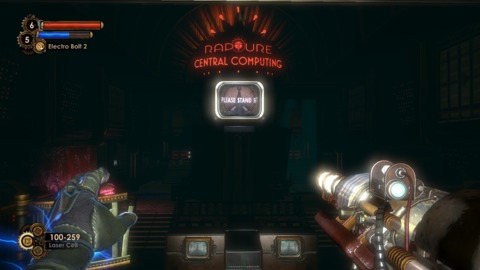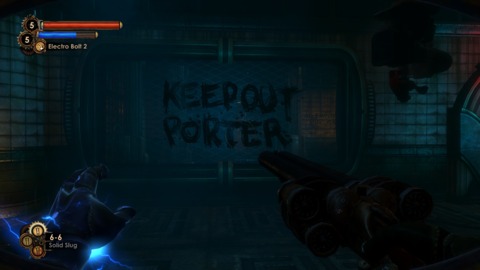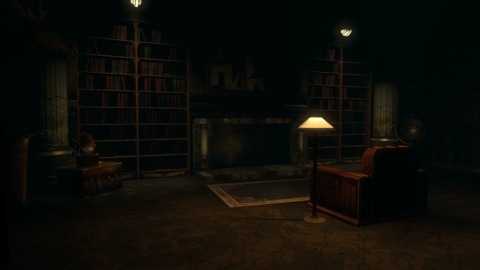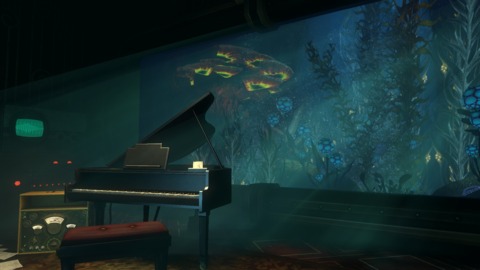Playing Old Games: Bioshock 2: Minerva's Den Pt. 2 (19/10/2013)
By The_Nubster 0 Comments
As always: spoiler city! Enter at your own risk.
I've decided to do these on Saturday now. Scheduling and all that. But here we go.
Bioshock 2: Minerva's Den
There are lots of things I want to say about Minerva’s Den. There are mechanics I’d like to discuss, graphical issues and strengths of an aging game, the idea of using audio recorders as a way to dole out plot and how that feels playing a game in 2013. I want to discuss combat, and ways to improve it, how Bioshock Infinite is the sleekest game in the series and what it learned from Bioshock 2, and lessons that Bioshock 2 could have taken from the first game. There are some enemy types that don’t mesh and I could discuss why and how to tweak them to fit better. There are plenty of things to talk about in regards to Minerva’s Den, but that would be a hollow talk. I’m not really thinking about those things, even though I am aware of them.
No, I’d like to talk about the story of Minerva’s Den. Maybe we’ll touch on some things in the process of discussing its plot and story, but they aren’t the focal point.

Minerva’s Den kicks right off with a tunnel exploding with you, an Alpha Series Big Daddy named Sigma, inside of it. (Alpha Series, by the way, just means you’re a Big Daddy what can use The Plasmids) The story very quickly establishes itself, and the short of it is this: you need to get to The Thinker, a supercomputer commissioned by Andrew Ryan and built by a man named Charles Milton Porter, and do something with it. A man named Reed Wahl, former partner of Charles Milton Porter, is not very keen on that idea. It isn’t clear what you need to do with the Thinker, but Porter contacts you via radio and urges you to reach it, and so your journey begins.
Minerva’s Den, as a location, breathes new life into Rapture. Bioshock 2 got picked on for re-using the setting of Rapture, even though it did some very imaginative things with it, so Minerva’s Den is smart to move away from the plain Rapture we’re all used to seeing. No, Minverva’s Den is part corporate office, part living space, part 70’s-era government computer den, complete with constant fax machine and dial-up noises and blinking lights. It’s a welcome departure from leaky walkways and run-down apartments, and manages to breathe life into the idea of Rapture for a third visit.
As is the usual, anything that isn't absolutely crucial is explained to you via audio logs, which made sense at the time this game was made. Credit where credit is due, though: most of the characters in the audio logs acknowledge that they’re recording, and are doing it for a very specific reason. One audio log consists of Man A chastising Man B for being a sneaky prick, and so Man A leaves the audio log to let Man B know that his office key has been put in to the vending machine for a rather exorbitant price. Of course, by the time you get there, everyone is dead, but it’s a reason for the audio logs to exist, and they stay rather consistent with the idea that audio logs are only left for a specific purpose, not for ramblings, door codes and sad last words.

When it comes down to it, the strength of the characters and the story is what really kept me going with Minerva’s Den. Reed Wahl, despite being a spliced-up insane murderer, has a very human arc. He started out as an engineer, the one in charge of actually putting The Thinker together while Porter worked out the numbers side of things. Once the raw power of The Thinker was made clear to Wahl, he began to go a little power-mad, even before the splicing. He put money of ballgames and other sports and used The Thinker to guide him, becoming rich in the process, and framed Porter using The Thinker’s personality duplication program. Once splicing drove everyone insane, his mania progressed to the point where he thought The Thinker could literally predict the future. To him, the Thinker was almost a god, a being he worshipped and tried to figure out. Over the course of the campaign, Wahl is belittling you with The Thinker’s ‘predictions’ of failure and death, and becoming more and more unhinged from sanity as you defy The Thinker’s predictions. In the end, when it’s all over, Wahl is just a simple man who was given too much power.
Porter, on the other hand, created The Thinker to keep Rapture running. Everything from doors and cameras, trains and pressure gauges to recycling oxygen, was tasked to Porter. His work on The Thinker was to keep everything under control and make sure Rapture didn’t collapse. He talks about his time in the war, and how he began to drift away from his wife, Pearl, because of his work contributing to the war effort. His final moments with his wife, before she was killed in the blitz, weren’t moments of peace and clarity and love, but instead of detachment and resentment. Porter neglected her, and she died before he had a chance to set it right. The audio logs that Porter left behind, consisting of either Porter and his wife talking into the recorders so they could listen to them later, or feeding those same recordings into The Thinker, go a very long way in showing both Porter’s love for his wife and his failing as a husband and as a friend. He wasn’t there when she needed him most, and he lost her.

The revelation that Subject Sigma is Porter isn’t a huge surprise, thanks to some clever foreshadowing and hints throughout the campaign. It avoids feeling like a ‘would-you-kindly’ moment that the Levine-helmed Bioshocks have had by not holding it over your head as the sole reason you’re playing through the DLC. It’s an interesting wrinkle that lends some weight to the final moments which, as far as endings go, might be one of my favourite of all time. Ever. Period. STOP.
The last forty five minutes-to-1 hour are clearly leading up to a fight, with Big Daddy after Big Daddy being hurled at you non-stop on your journey to The Thinker’s central area, where you will eventually kill Reed Wahl himself. When you enter that arena, you have to fight 4 Alpha Series big Daddies at once. After that, you fight Reed Wahl himself, who has more health than Gravity does tension, and then you’re invited to the surface by Brigid Tenenbaum. “Well okay,” I thought to myself, “it’s a videogame, so it has to end in a big fight.” After this, though, it allows you to walk from The Thinker’s central core to the bathysphere dock, which takes you right through Porter’s former offices. What you’re treated to are a number of beautiful, striking sights made all the more powerful by the previous reveal of Sigma-is-Porter. Being invited on this walk was a huge sigh of relief: too often a game ends minutes after the climactic fight, and offers no closure or insight at all. It’s on this walk that the Gone Home lineage becomes quite clear.

There’s something very powerful about the office, an almost-cozy den complete with all of the fixin’s of a home: a desk, a living area, a music room- but leading directly to cold, unfurnished cave walls and flanked by the unending emptiness of the sea. You’re given free rein in these parts, to explore and wander and take in the loneliness of Porter’s old offices. In a way, it’s a reflection of what he was and what he’s become: caring and loving, but surrounded and consumed by his work, endless ambition that drove a wedge between him and the one he loved. More literally, he’s a human on the inside, but his outside is a cold steel monster wielding weapons of death.
Minerva’s Den, I’m really glad I spent the money on you. There’s a lot I didn’t enjoy, mostly the dated combat and tired Bioshock tropes, but what you managed to do with those restrictions and the characters you managed to build far outshine any gripes that I had with your mechanics. Just like Bioshock 2 itself, Minverva’s Den is an incredibly human story, unlike the heavy-handed thematic showpieces that Levine and the original Bioshock team seem fond of creating. Minerva’s Den is full of melancholy and disappointment, a bitter exploration of well-meaning ideas turned sour. Porter’s tale does end happily, with him letting go of the regret he kept bottled up inside, but he’ll never be able to erase the mistakes he made. And with that, I’m going to take a cue from Porter and move on as well. Thanks for the adventure, Minerva’s Den.
